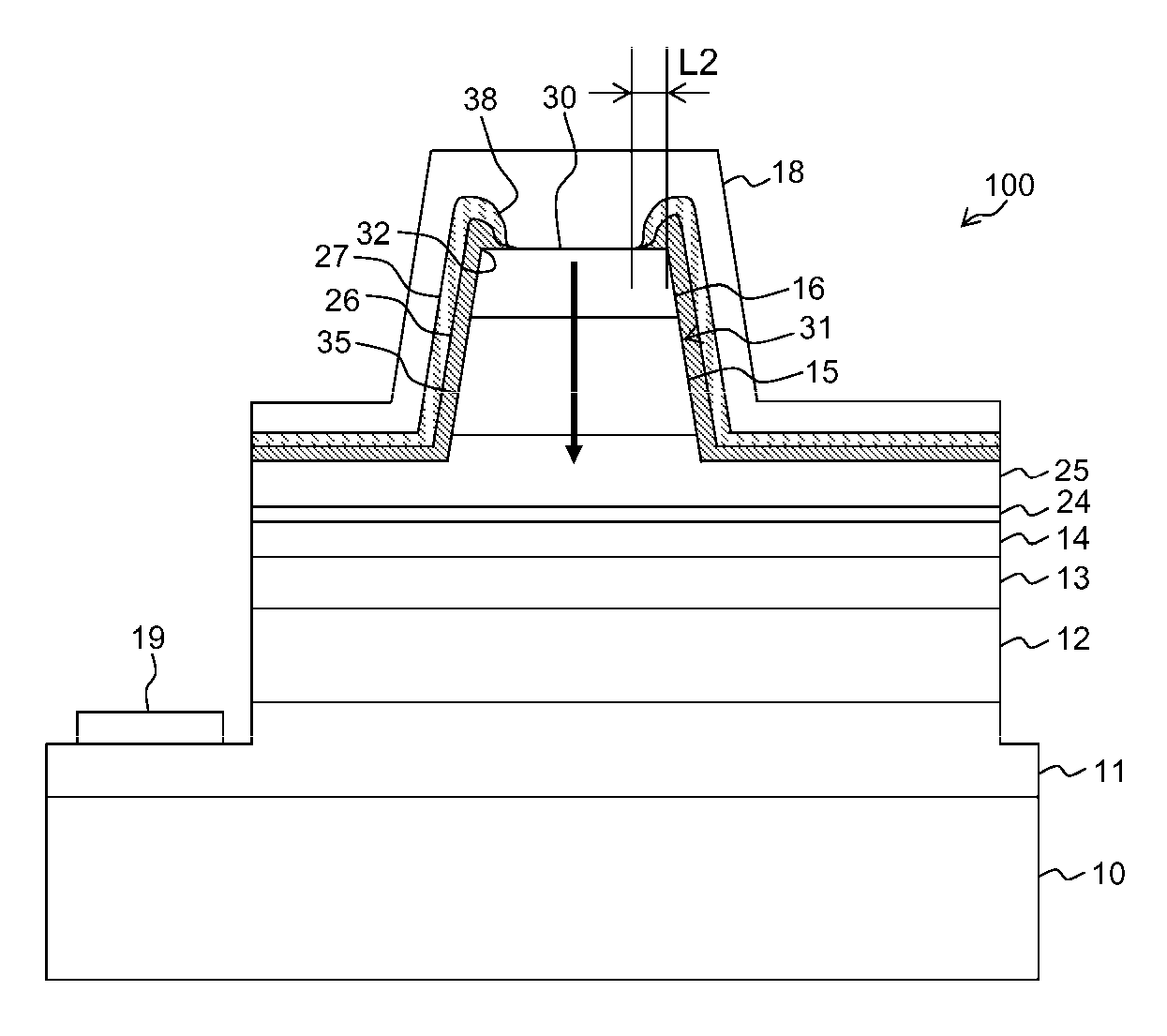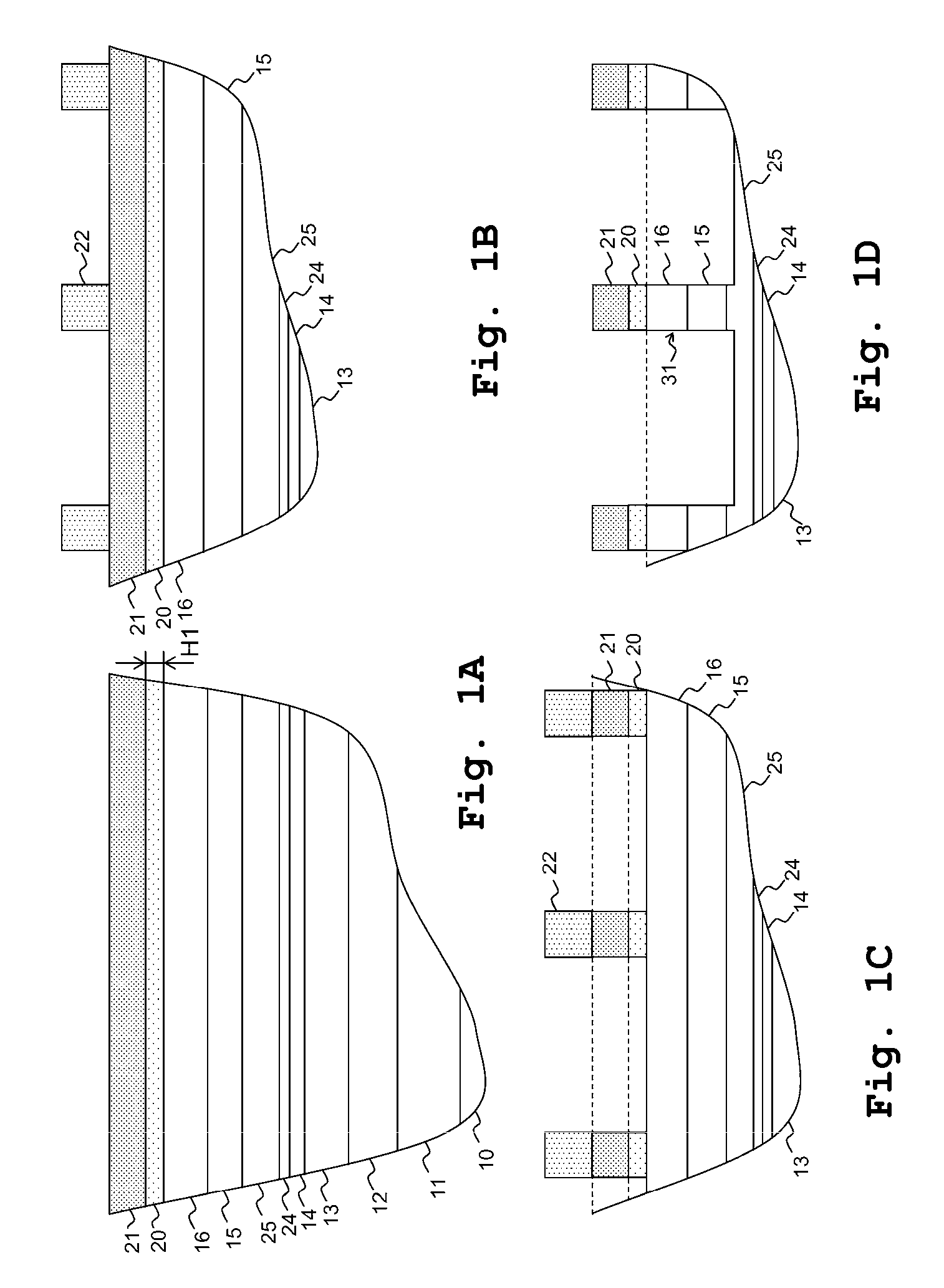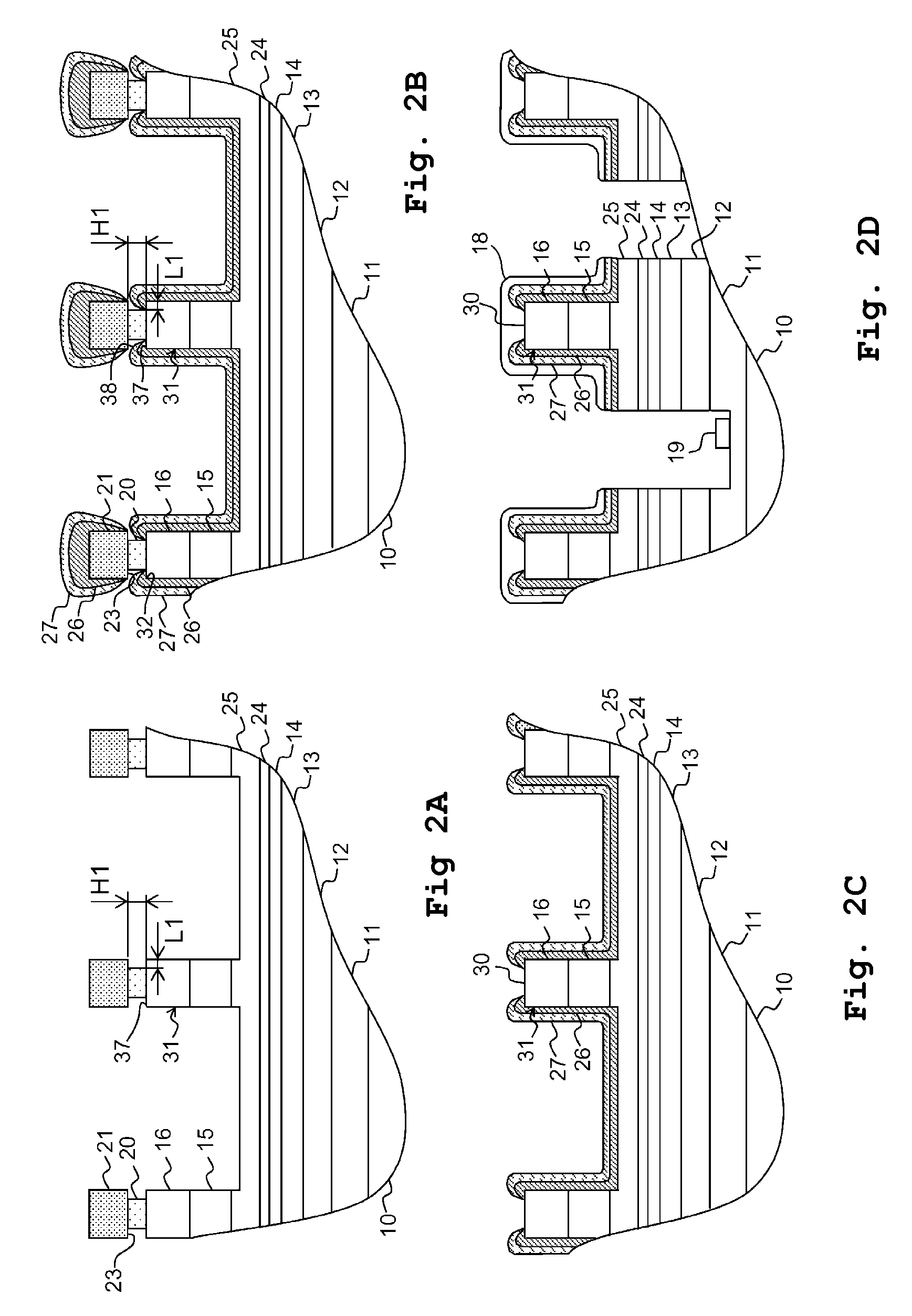Semiconductor light-emitting device
a semiconductor and light-emitting technology, applied in the direction of semiconductor lasers, solid-state devices, lasers, etc., can solve the problems of poor adhesion with respect to pd/au, unstable kink level, easy to come off of zrosub>2 /sub>film, etc., to improve voltage resistance, improve adhesion, and reduce the effect of electric field concentration
- Summary
- Abstract
- Description
- Claims
- Application Information
AI Technical Summary
Benefits of technology
Problems solved by technology
Method used
Image
Examples
first preferred embodiment
[0051]First, explanation will be made of the method for manufacturing a semiconductor light-emitting device according to the present preferred embodiment. FIGS. 1A to 1D and FIGS. 2A to 2D are schematic representations that show processes before forming the p-type electrode layer and the n-type electrode on a Group-III nitride-based compound semiconductor wafer expressed as AlxGayIn1-x-yN (where, 0≦x≦1; 0≦y≦1; 0≦x+y≦1). FIGS. 1A to 1D and FIGS. 2A to 2D indicate schematic cross-sectional views of a semiconductor light-emitting device in each process. It is noted that, in each figure, only a portion that requires the explanation of the method for manufacturing a semiconductor light-emitting device is described.
Mask Layer Forming Process
[0052]In the manufacturing method of a semiconductor light-emitting device according to the present preferred embodiment, a semiconductor light-emitting device of a Group-III nitride-based compound semiconductor expressed as AlxGayIn1-x-yN (where, 0≦x≦...
second preferred embodiment
[0082]Next, discussion will be made of another preferred embodiment of the method of manufacturing a semiconductor light-emitting device. FIG. 8A through FIG. 11D are schematic representations showing processes to form a p-type electrode layer and an n-type electrode layer on a wafer of a Group-III nitride-based compound semiconductor expressed as AlxGayIn1-x-yN (where, 0≦x≦1; 0≦y≦1; 0≦x+y≦1), and to complete a semiconductor light-emitting device. In addition, FIGS. 12A and 12B are schematic representations of a manufacturing process of a semiconductor light-emitting device according to another preferred embodiment. FIG. 8A through FIG. 11D show schematic sectional views of the semiconductor light-emitting device in each process. In addition, in FIGS. 12A through 12B show schematic sectional views of the semiconductor light-emitting device in each process. It is noted that in FIG. 8A through FIG. 12B, only a single-unit semiconductor light-emitting device is described, but this can ...
PUM
 Login to View More
Login to View More Abstract
Description
Claims
Application Information
 Login to View More
Login to View More - R&D
- Intellectual Property
- Life Sciences
- Materials
- Tech Scout
- Unparalleled Data Quality
- Higher Quality Content
- 60% Fewer Hallucinations
Browse by: Latest US Patents, China's latest patents, Technical Efficacy Thesaurus, Application Domain, Technology Topic, Popular Technical Reports.
© 2025 PatSnap. All rights reserved.Legal|Privacy policy|Modern Slavery Act Transparency Statement|Sitemap|About US| Contact US: help@patsnap.com



